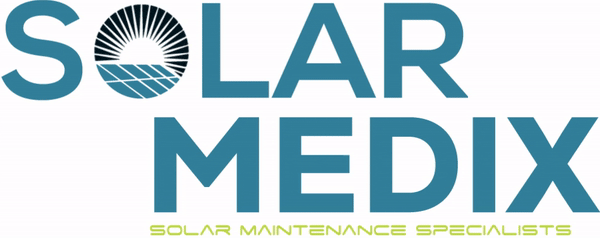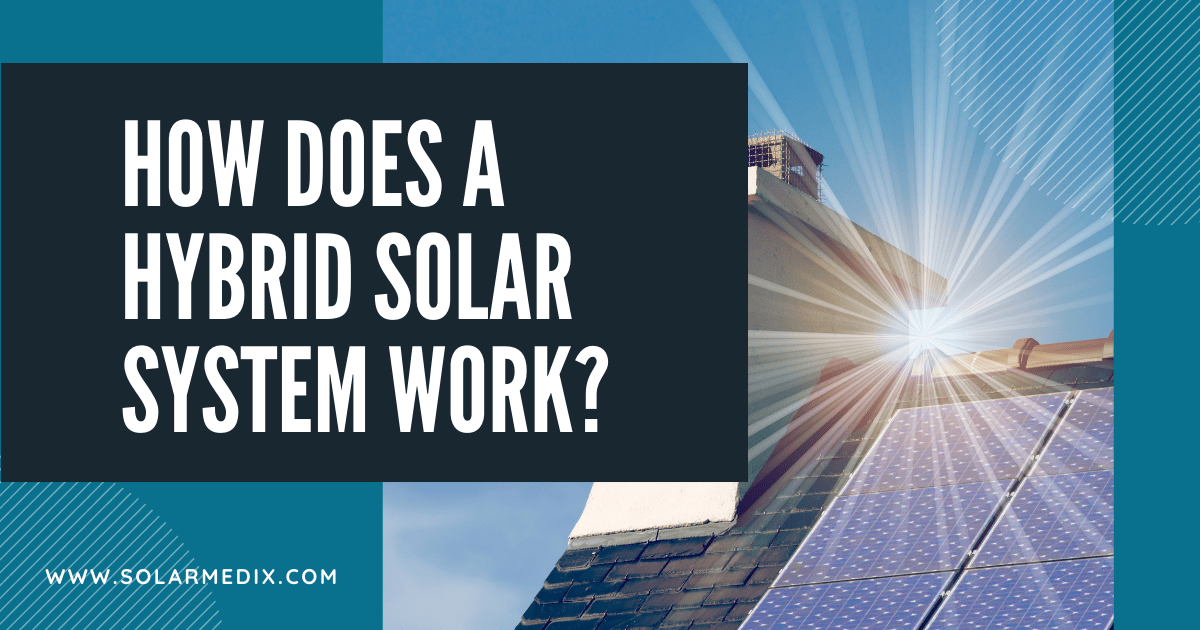For quite some time there were only two types of solar systems that one could opt for: off-grid solar systems and grid-tied solar systems. But, with an increasing demand and necessity for solar energy, there was the introduction of the hybrid solar system.
While the name suggests that this is a super-combination of the two earlier solar systems, it still raises the question – how unique is this type of system, and what are its advantages?
What Defines a Hybrid Solar System?
A hybrid solar system was primarily designed to integrate the best features of both off-grid and grid-tied, or on-grid, solar systems. You essentially get the best of both worlds by receiving the overall guaranteed electricity supply of the grid along with the benefit of having a battery backup system for storing electricity that’s produced throughout the day to use at night.
For anyone who knows that the essence of having an on-grid solar system is to make net-metering simpler, this leads to another fundamental question – how does this type of system actually work?
How a Hybrid Solar System Works
It is common knowledge that any solar system generates power during the day, particularly with the peak energy production hours being midday. Essentially, this means that as a homeowner who has taken the initiative to invest in grid-tied, or on-grid, solar energy, these peak production hours are likely to be when you’re not at home.
As a result, this green energy move might not be so smart, considering that most of this energy is fed to the grid when not in use. The biggest problem is that many electricity network operators have significantly reduced their solar-feed-in tariff, which means you will get little return from the energy fed to the grid.
On the other hand, if you have invested in an off-grid solar system, you are limited to the amount of energy that is produced during the day. Often, this means having to invest in bigger batteries and staying in a region that receives an abundance of consistent sunlight for most of the year. Essentially, on the days when little solar energy is produced, you are limited in terms of the amount of energy available to you.
A hybrid solar system offers a safe middle ground for staying connected to the utility grid while also using batteries for energy storage. A hybrid system contains several different components that do the following:
- Solar panels that serve the primary function of capturing and absorbing energy from sunlight. They then convert this energy into Direct Current (DC) and send this to the solar inverter.
- Solar inverters then receive the Direct Current (DC) from the solar panels and convert it into Alternating Current (AC) before being sent to the switchboard.
- The switchboard then plays the role of supporting the distribution of the generated electricity. A switchboard also supports the transmission of generated electricity to the battery inverter and meter. It is primarily the central location through which electricity flows from one point to the other.
- The battery inverter then converts the generated electricity into a storable form of energy and directs this to the batteries. These inverters first use solar power, and if the batteries are not fully charged, supplements it with the main utility power. However, if the solar power exceeds the battery capacity, the surplus energy is directed to the utility grid once it is fully charged.
- Batteries are designed for energy storage, and this energy is meant to be used when your solar panels are not generating electricity. A considerable advantage of this is that the stored energy will be used during the hours when electricity tariffs are high and during a power blackout. For a hybrid solar system, the standard has been to use lithium batteries with better energy storage capabilities that are also not bulky in size.
Advantages of a Hybrid Solar System
2) Greater value from solar investment
A hybrid solar system allows you to attain maximum value from your solar investment as it fully utilizes the solar power produced. In many homes, there is high energy consumption in the evenings, when there is little to no solar energy production. A hybrid system seals this gap as all energy produced during the day is made available at night without the worry of export limits to the utility grid or low solar-feed-in tariff.
2) Electricity flow is maintained even when there is a blackout
The technology behind a hybrid solar system effectively factors in your energy consumption, and the stored energy can cover most of your needs. This means that you will never have to worry about inconveniences caused by power blackouts, as your stored energy will be enough to get you through an outage.
3) Supports advanced energy management
While there are always particular days when solar production is low, with a hybrid solar system, such days are covered by your peak production days. This makes it easier to control your energy demands without the ever-present fear of huge electricity bills.
4) Significantly reduces reliance on the utility grid
A hybrid solar system will enable you to have a smart energy solution that significantly reduces your reliance on the utility grid. The tailoring of the set-up is its biggest strength as it draws from the stored energy during hours when the electricity company charges higher tariffs (peak hours). Therefore, even when you draw from the utility grid, it is during the hours when you pay lower tariffs, and this will lead to more significant savings.
The Bottom Line
Hybrid solar systems are becoming the new standard for modern consumers who want to go green while making significant savings on their electricity bills. While it is expensive to install this type of solar system compared to an on-grid solar or off-grid system, there is no question about the value it guarantees. The good news is that if you already have an on-grid solar system, it is possible to upgrade to a hybrid solar system.
Be sure to make it a priority to partner with the right solar company if you opt for a hybrid solar system and want to ensure top value from your investment. In the end, the sophisticated technology behind this solar system and the advancements in battery production are quickly making this option one that will outshine the traditional solar systems. If you have any questions, contact us today.













